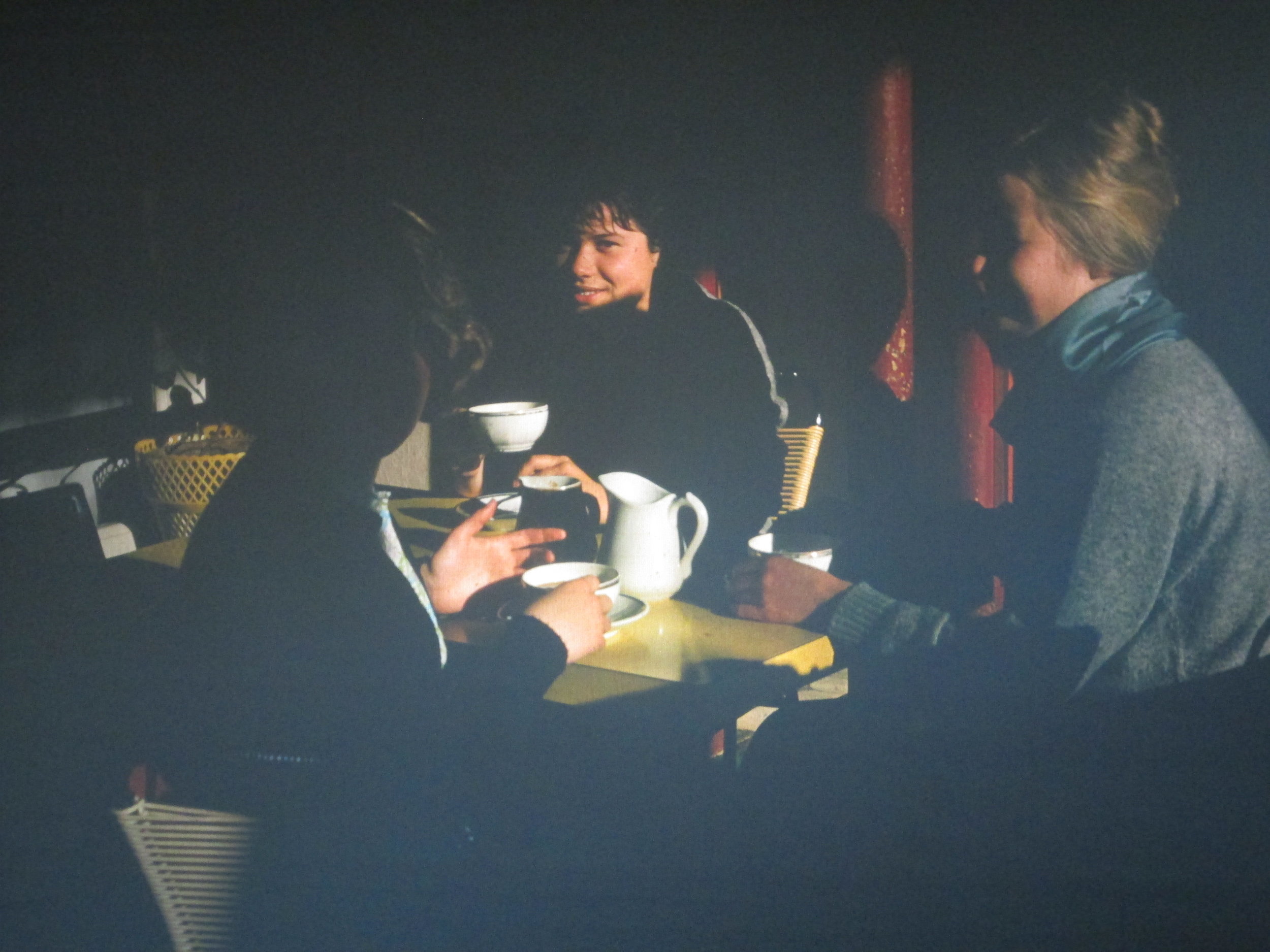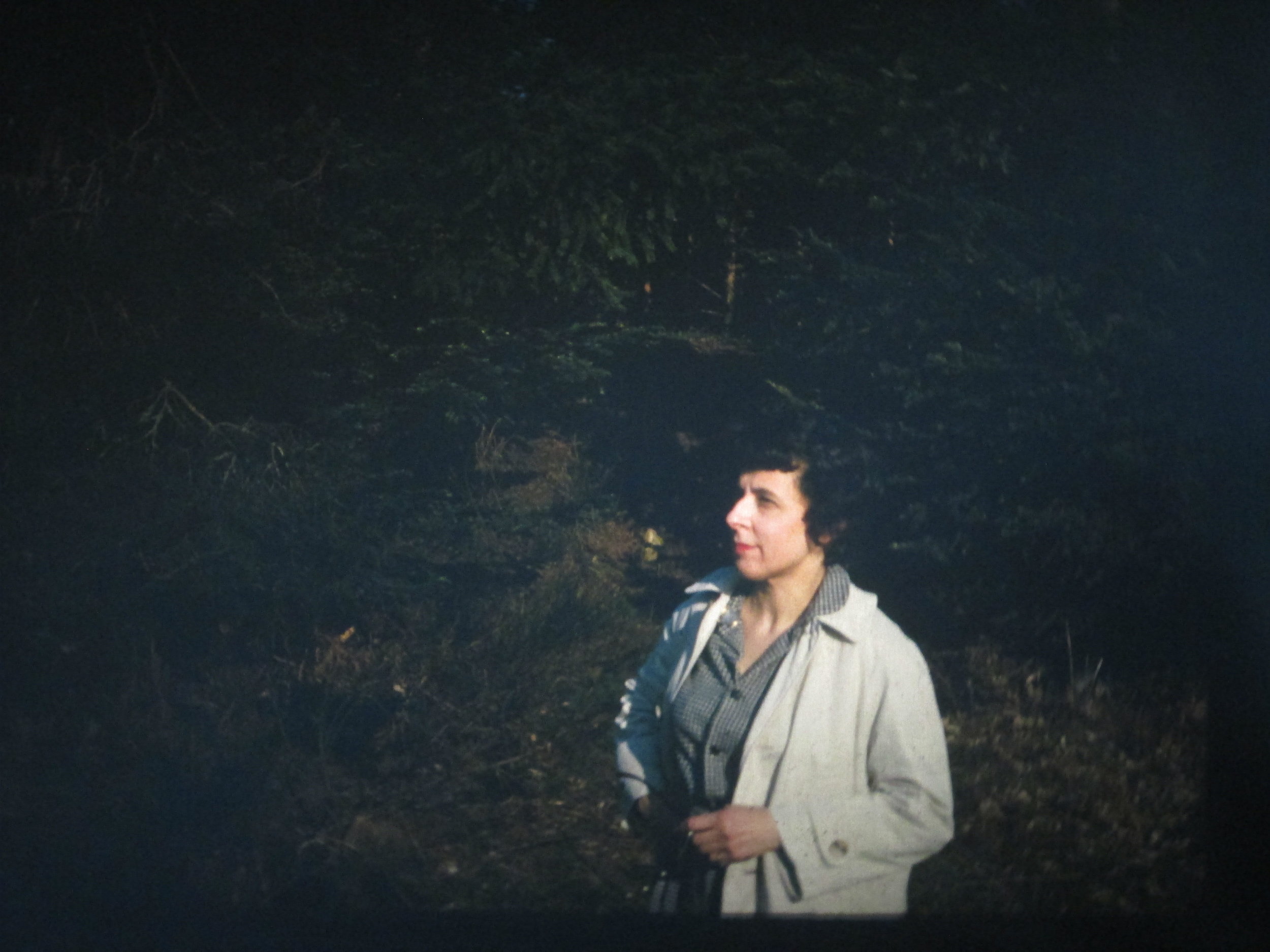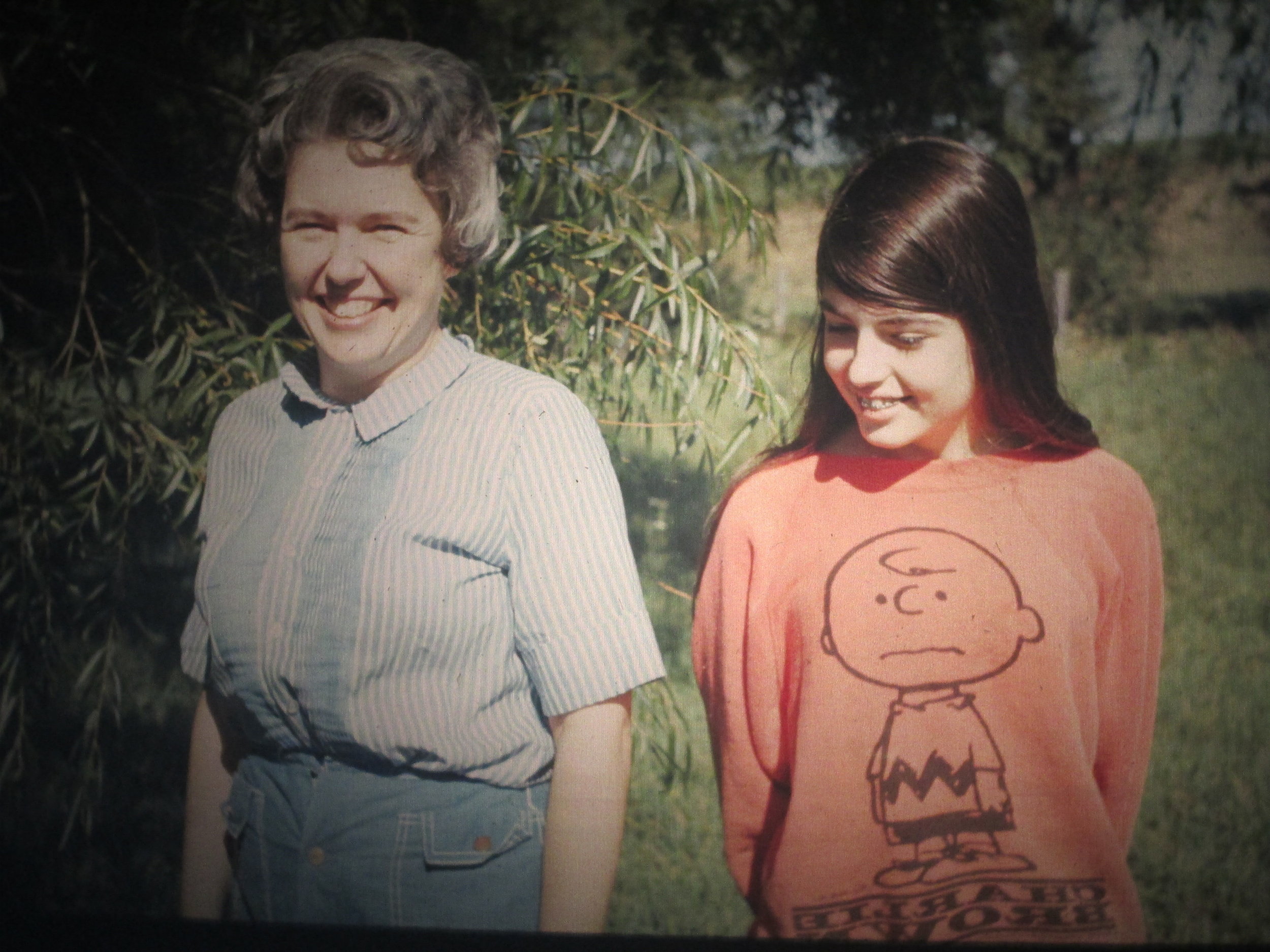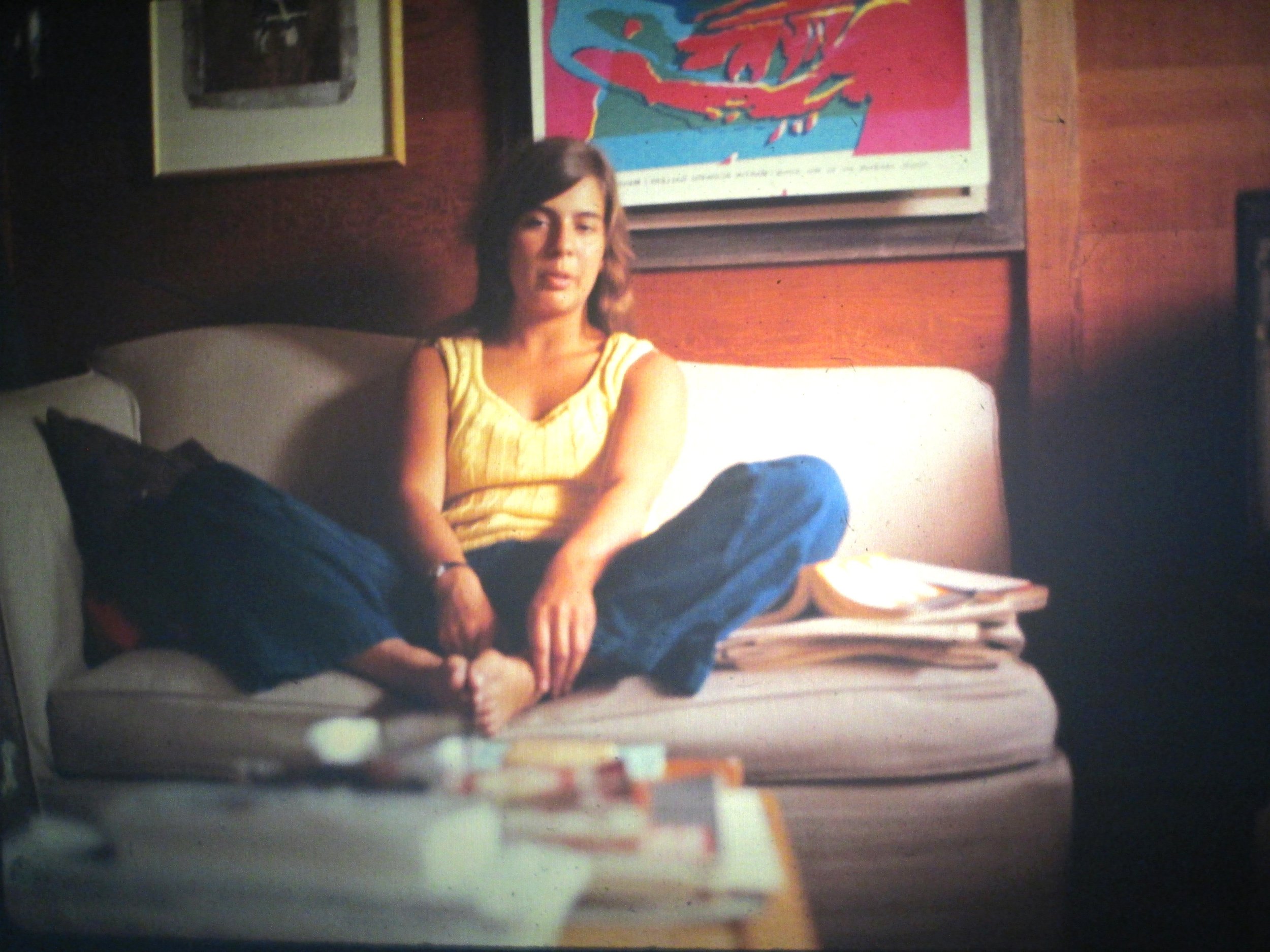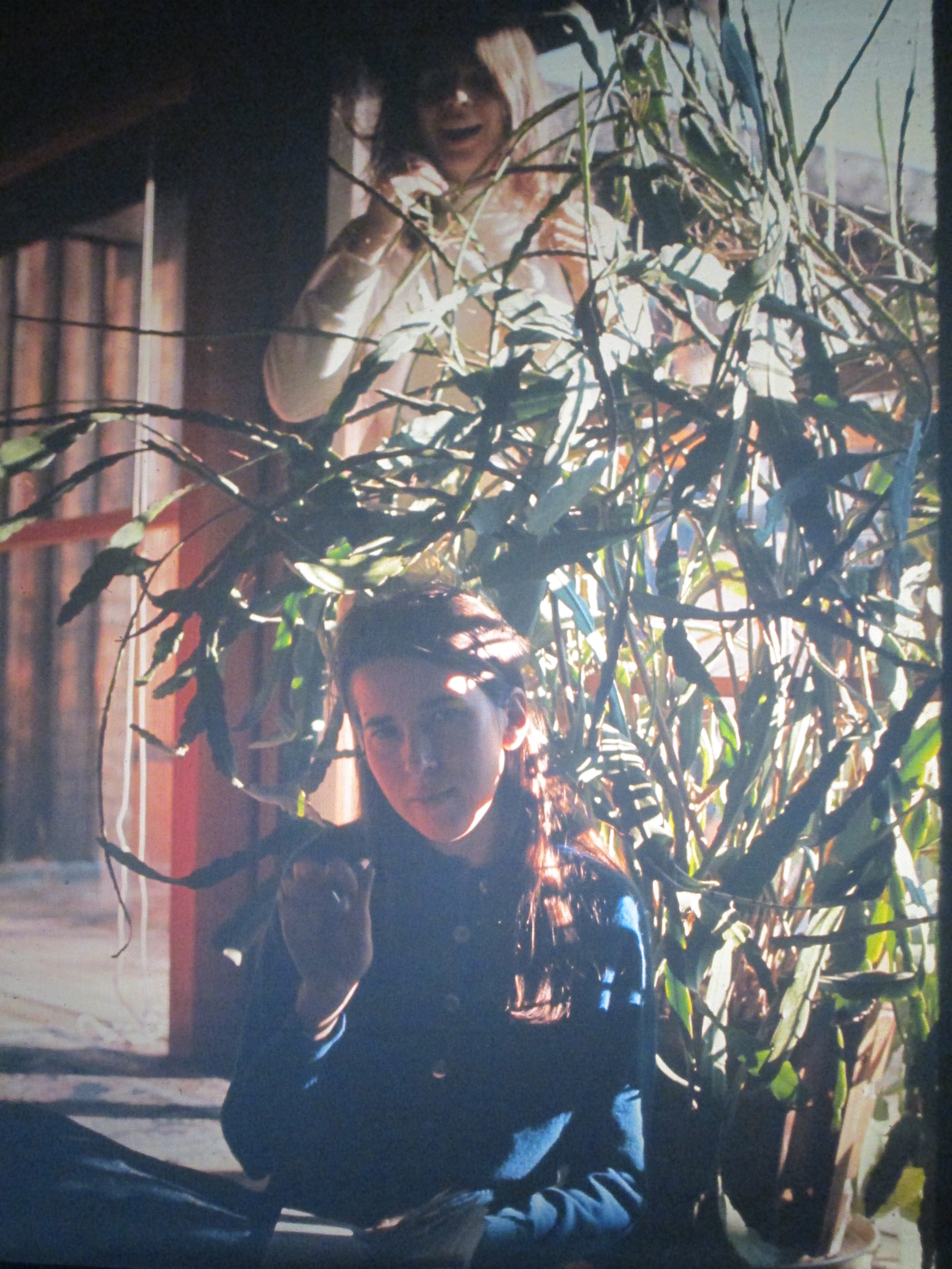Martyl (1917–2013) and Alexander (1912–1996) Langsdorf purchased the home of master architect Paul Schweikher in 1956, after renting since 1953. Martyl, a life-long fine artist, fell in love with the former architectural studio and used the space to paint her masterpieces until her death in 2013 at the age of 96.
Martyl and her husband, Alexander, a physicist who studied at MIT and at the University of California, Berkeley before moving to Chicago in 1943, had come to the Windy City at the invitation of Enrico Fermi to begin work on what was then the top secret Manhattan Project at the University of Chicago. Both Martyl and Alexander were natives of St. Louis. Before coming to Chicago, Alexander had helped build a cyclotron at Washington University in St. Louis.
Martyl also had a hand in the history of atomic science. She designed the Doomsday Clock for the June 1947 issue of The Bulletin of the Atomic Scientists. This universally recognized clock still denotes the world’s impending vulnerability to not only nuclear war, but also climate change and disinformation.
Martyl Langsdorf
1917 March 16th Martyl Schweig born in St. Louis, Missouri.
1941 December 31st Married Alexander Langsdorf, Jr.
1947 Designed the Doomsday Clock for the Bulletin of Atomic Scientists.
2013 March 26th Died in Schaumburg, Illinois.
Martyl Suzanne Schweig was born on March 16, 1917. Her mother was a painter and her father was a photographer. Martyl graduated from Washington University in St. Louis. She married Alexander Langsdorf Jr. on December 31, 1941. Together they had two daughters, Alexandra and Suzanne.
Martyl heavily painted abstract landscapes and still lifes. She had nearly 100 solo exhibitions during her eight-decade career. She drew up until her death in 2013. Her works have found homes in the National Museum of American Art, the Hirshhorn Museum and Sculpture Garden and the Printworks Gallery in Chicago.
Martyl Langsdorf passed away on March 26, 2013.
Martyl’s story is one of many included in the National Trust for Historic Preservation’s “Where Women Made History” campaign. The NTHP’s goal is to discover 1,000 places connected to women’s history, and to elevate their stories for everyone to learn and celebrate. You can see Martyl’s entry here.
The Doomsday Clock.
Martyl is best known for being the designer behind the Doomsday Clock, a symbol for the potential devastation of nuclear weapons and the apocalypse. The idea of using a clock for the cover was meant to signify urgency, with the hands counting down to midnight. The Doomsday Clock was drawn for the June 1947 cover of the Bulletin of Atomic Scientists. Martyl designed the sketch of the clock on the back of a copy of Beethoven’s Piano Sonatas, with the idea that the background color would change every month. The design of the clock ran on the cover of the Bulletin, for decades, and can still be found somewhere on the cover. Martyl drew end pieces and illustrations for Bulletin articles from 1947 until the 1970s.
Pentagram has updated the image of the Doomsday Clock, the graphic symbol of the world’s proximity to nuclear annihilation. The clock is the emblem of the Bulletin of the Atomic Scientists, the advocacy group formed in 1945 by scientists from the Manhattan Project. The redesign, developed by Michael Bierut and Armin Vit, coincides with the group’s decision to move the clock forward from seven to five minutes before midnight, or metaphorical doomsday. The move forward reflects the increasing availability of nuclear weapons and the effects of climate change. The Bulletin of the Atomic Scientists announced the two-minute move forward today.
Alexander Langsdorf
Alexander Langsdorf Argonne Lab around 1965.
1912 May 30th Born in St. Louis, MO.
1932 Graduated from Washington University in St. Louis.
1937 Received his Ph.D. in physics from MIT.
1938 Became a research fellow at the University of California at Berkeley.
1939 to 1942 Worked as a physics instructor at Washington University in St. Louis.
1941 December 31st Married Martyl Suzanne Schweig.
1943 to 1945 Worked on the Manhattan Project in Chicago.
1945 to 1977 Worked at Argonne National Laboratory until retirement.
1996 May 24th Died in Chicago, IL.
Dr. Alexander Langsdorf (1912-1996) was an American physicist who worked under Enrico Fermi at the University of Chicago.
He helped design the nuclear reactor Chicago Pile-2, following the success of Chicago Pile-1. He signed the Szilard Petition, which attempted to avert the use of the atomic bomb against Japan. After the war, Langsdorf become an outspoken opponent of the proliferation of nuclear weapons and helped found the Bulletin of the Atomic Scientists. His wife, Martyl, designed the Bulletin's iconic "Doomsday Clock." He and Martyl had two daughters, Alexandra and Suzanne.







